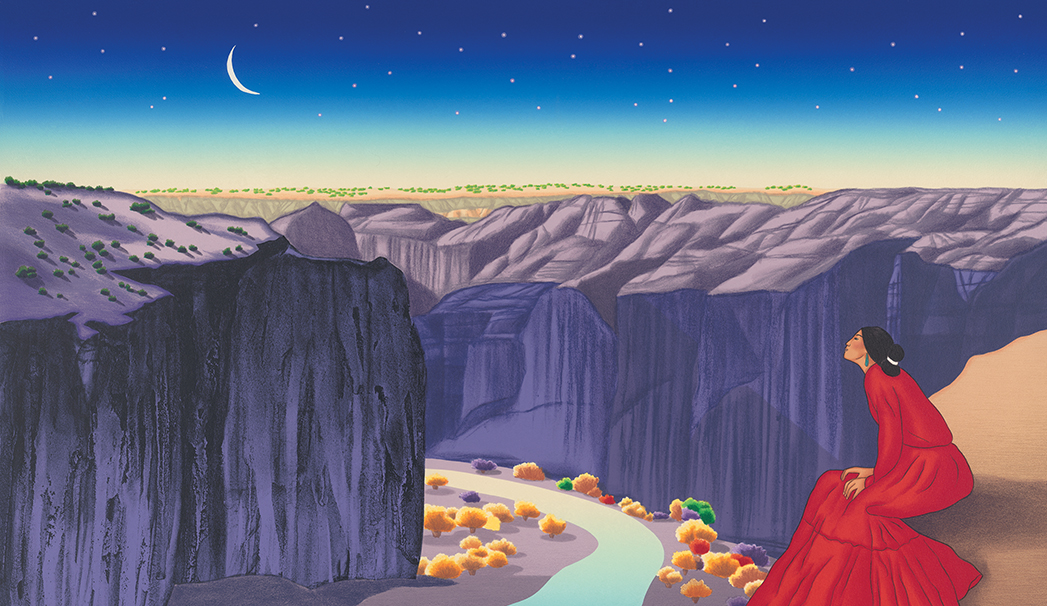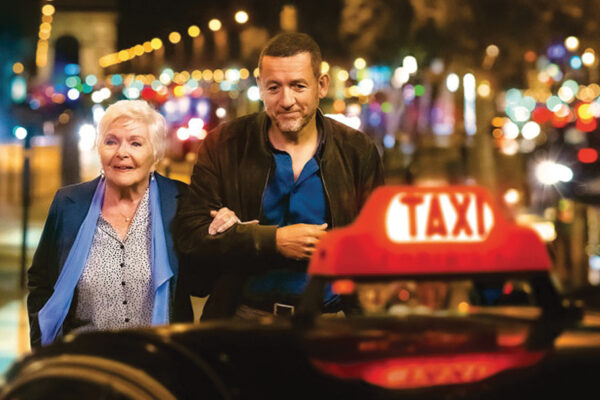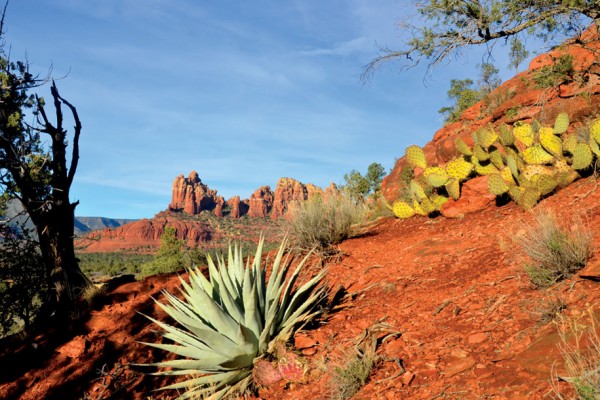To spend time in R.C. Gorman Navajo Gallery in Uptown’s Cedic Plaza is to receive an education on the lithograph printing process and R.C. Gorman, arguably the first Native American to be internationally recognized as a major American artist. The gallery opened its doors in June 2016; it is owner Bob Sahd’s fourth R.C. Gorman gallery location, the first being in Taos, New Mexico, where Rudolph Carl Gorman lived and worked until his death in 2005 at the age of 74. The Sedona space showcases R.C.’s original oil and pastel paintings, lithographs, serigraphs and giclees. There are also a handful of R.C.’s bronze sculptures and even artwork from his father, Carl Nelson Gorman.
R.C. was born in Chinle, Arizona, in 1931. A third-generation Navajo artist, he spent several years in the U.S. Navy before heading to Mexico City to study Social Realist artists such as Diego Rivera. He returned to the U.S. to attend Northern Arizona University, spent time in San Francisco and then settled into Taos where he opened his first gallery in 1968. If R.C.’s paintings look familiar to you, they should. A prolific artist right up until the end of his life, R.C. repeatedly painted Native American women against a backdrop of bright colors and, frequently, Arizona landscapes such as Canyon de Chelly and Monument Valley. His work quickly received recognition. The New York Times called him “the Picasso of American Indian art,” and in 1973 he was the only living artist whose work was shown at the Masterworks From the Museum of the American Indian show held at the Metropolitan Museum in New York City.
His paintings became part of the permanent collection of numerous museums as well as the Department of the Interior and Bureau of Indian Affairs in Washington, D.C. An enthusiastic foodie with a penchant for throwing lavish dinner parties, R.C. authored several cookbooks. Andy Warhol painted his portrait. He counted Elizabeth Taylor and numerous other celebrities as collectors, but through all the fame, he never lost sight of his purpose. “He became a mainstream artist and a celebrity starting in the 1950s,” says Dawn Walker, the Sedona gallery’s manager, “but he always wanted to preserve his culture. I think in many ways his work bridges the gap between avant-garde and commercial art.” – Erika Ayn Finch. Photo by Michael Thompson.
MORE SEDONA ART GALLERIES: Shows, exhibitions and happenings




